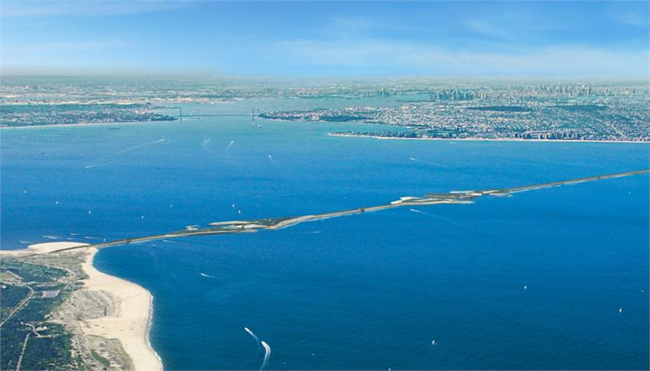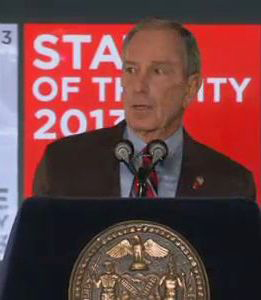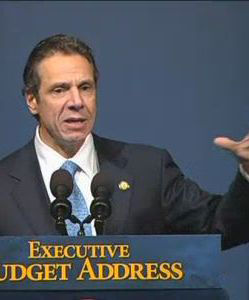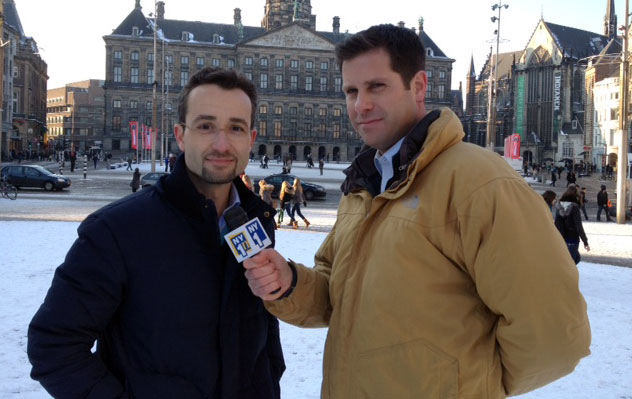NY1: Fighting The Tide (February 2013)
In the wake of its devastation, Hurricane Sandy leaves New York with difficult questions about how the city could prevent similar destruction in another storm. The Netherlands is familiar with the risks of flooding. It has implemented numerous measures – some big, some small – to prevent a recurrence of the disaster that decimated that country in 1953.
With an eye toward how New York will prepare for the next Sandy, Josh Robin of NY1 News and Juan Manuel Benitez of NY1 Noticias traveled to the Netherlands in January to produce a five-part special series "Fighting the Tide."
Dr. Malcolm Bowman, a Stony Brook University School of Marine and Atmospheric Sciences oceanography professor and storm surge expert, is featured in the first part of this series (see first video below). Bowman also appears in the second of a seven-part web-extra report filed by Robin (see second video below).
"I
think there needs to be some serious planning for the future, not just
for the two or three or even ten years," said Bowman. "Do we want New
York City to exist in the way that we know it and love it today? Or are
we willing to have catastrophic storms like we experienced with Sandy?"
NY1: Fighting The Tide - A Report, Part 1 (February 2013)
Duration: 1 minute and 59 seconds
SBU investigator Malcolm Bowman begins speaking at 24 seconds into the segment
NY1: Fighting The Tide - Web Extra, "It Did Happen Here" (February 2013)
Duration: 6 minute and 29 seconds
SBU investigator Malcolm Bowman is featured in the entire segment
Bowman talks about the Dutch approach to storm protection in this extended interview
There are markers like this all over New York City, though maybe not as formal, not yet at least. You can recognize them instead in the remnants of sand and seaweed stuck on basement walls left from the surge brought in by Hurricane Sandy. You can spot it on the mold that grows one some beams and not others.
As you can tell from the Manhattan Project – the remarkable geographical study of New York City – representatives of the Dutch West India Company found familiar land at the southern tip of Manhattan Island 400 years ago. The Netherlands may carry the lore of dikes and windmills. But New York City has 578 miles of coastline. About ten percent of the city is in flood zones. (In the Netherlands a full third of the country is below sea level).
There is another similarity between New York and the Netherlands. The 1953 storm there exposed the fallacy that the levees were strong to protect the lowlands from any storm. Sandy exposed the same fallacy here. We weren't prepared.
Dutch officials could have chalked up the damage of 1953 to nature's vicissitudes, rolled the dice that it wouldn't reoccur for at least decades and simply rebuilt the levees as they were, as they had lasted for centuries before the 1953 flood.
Or they could take flood protection to an entirely new level – a level that would require time, sacrifice, imagination, and money.
The Dutch picked the second option. No one has drowned in a flood since.
Today New York faces a similar choice.

A rendering shows a potential storm sea barrier connecting Sandy Hook, NJ, to Breezy Point, Queens. (Photo Credit: CH2M)
Mayor Michael Bloomberg has talked about adapting the city to flood change with higher home foundations, sand dunes, and resilient utility networks. But he also says Hurricane Sandy was a perfect storm, so to speak: A full moon, a westerly-blowing hurricane, a full tide. Bloomberg insists the chances it will reoccur are minimal – too remote to justify the inconvenience, uncertainties, schedules and eye-popping costs that are required if we are to follow the Dutch's footsteps.

Mayor Bloomberg discusses the devastation from Hurricane Sandy in his State of the City Address in mid-February.
"Dikes and barriers, if you want to do that, I would think reasonable time frame would be 15 to 20 years before you put a shovel in the ground," he said in late January. "I've never been convinced that is possible, number two that is worthwhile, and number three, that is environmentally something that would ever pass muster, and all of the court battles you'd have. Your grandchildren may see them, but you won't."
The mayor may be right to be opposed to the some of the kinds of things the Dutch have done. New York may not ever need them, at least not in our lifetimes.
Then again, he may be wrong.
Not even the savviest scientist can predict exactly what will happen tomorrow. But the environment is more extreme, be it summer heat waves in Chicago, or ice melt in the Arctic or water levels in Rotterdam. Closer to home, a state panel found that by the end of this decade there could be a temperature increase of up to three degrees and a sea level increase of up to ten inches.
These are all things the mayor knows and often cites, adding to the confusion when it comes to his resistance to flood-prevention projects now.
Governor Andrew Cuomo is more willing to consider the big projects, though both men's spin doctors try to tamp down any signs of difference.

Governor Cuomo addresses post-Sandy rebuilding efforts in January's Executive Budget Address.
"We're not just going to build back New York to what it was – we are going to build a New York that never existed before," Cuomo said during a budget address in mid-January.
While Bloomberg touts his "rapid repairs" program to keep people in place, the Governor is proposing to pay people to turn their vulnerable waterfront properties to parkland.
"There are some parcels that Mother Nature owns," the Governor said in his State of the State address in January. "She may only visit once every few years, but she owns the parcel and when she comes to visit, she visits."
Hurricane Sandy struck just after much of the Northeast had finished cleaning up from Tropical Storm Irene. As Cuomo has noted dryly, that's two once-in-a-hundred year storms laying waste to vast parts of New York in the span of just 14 months.
As of mid-February, officials have only just begun to spend the more than $50 billion Congress grudgingly approved in storm relief. The Army Corps of Engineers, which builds flood-prevention projects, is studying how to best use the money that it got as part of the bill. Much of the $1.7 billion already marked for the city is going to home rebuilding.
As you will see, there are indeed trade-offs, and not just when it comes to cost and disruption. The barriers prevent floods in The Netherlands – but only one on side. Land on the other side – and there would be a lot of it in New York – would need to be shored up with other measures, like high sand dunes and levees.
What exactly will happen in New York is still unclear, although we may get more answers after Bloomberg leaves office New Year's Day 2014. While no one is advocating building a barrier tomorrow, experts do warn that another big storm will hit New York. It's just not clear when.
"I think there needs to be some serious planning for the future, not just for the two or three or even ten years," said Malcolm Bowman, professor of Physical Oceanography at the State University of New York's Stony Brook Campus, where he leads the Storm Surge Group. "Do we want New York City to exist in the way that we know it and love it today? Or are we willing to have catastrophic storms like we experienced with Sandy?"
In short, New Yorkers face many of the tough choices the Dutch confronted sixty years ago. That's why we traveled to the Netherlands: to talk to officials and experts, so that we can inform fellow New Yorkers about the menu of options, and the tradeoffs that come with them. We limited our tour to the major initiatives the Dutch launched that focus on flood-prevention and control. There just wasn't time to look at other things they are doing to limit damage from floods.

"Fighting The Tide," a special web-extra report on NY1.com, was written by NY1 political reporter Josh Robin, right, with photography and additional reporting by NY1 Noticias reporter Juan Manuel Benitez, left.